Abstract
Salmonellae in the environment remain a potential source of disease. Low numbers of salmonellae have been detected and enumerated from environmental samples by most-probable-number methods which require careful colony selection from a plated agar medium. A modified xylose lysine brilliant green medium was prepared to control the loss of selectivity caused by heating the brilliant green component. Added agar reduced colony spreading. The medium contained 47 g of xylose lysine agar base per liter; the agar content was adjusted to 2%, autoclaved, cooled to 50 degrees C, and then amended just before pouring to include H2S indicator and 7 ppm (7 ml of 1:1,000 brilliant green per liter) of unheated brilliant green dye. H2S-positive salmonellae were easily detected from sewage sludge compost to the exclusion of most other gram-negative bacteria. As a result, fewer non-salmonellae were picked for further most-probable-number analysis, greatly reducing the work load associated with the most-probable-number method. Direct plating was possible for enumerating salmonellae in laboratory composts containing ca. 10(3) or more salmonellae.
Full text
PDF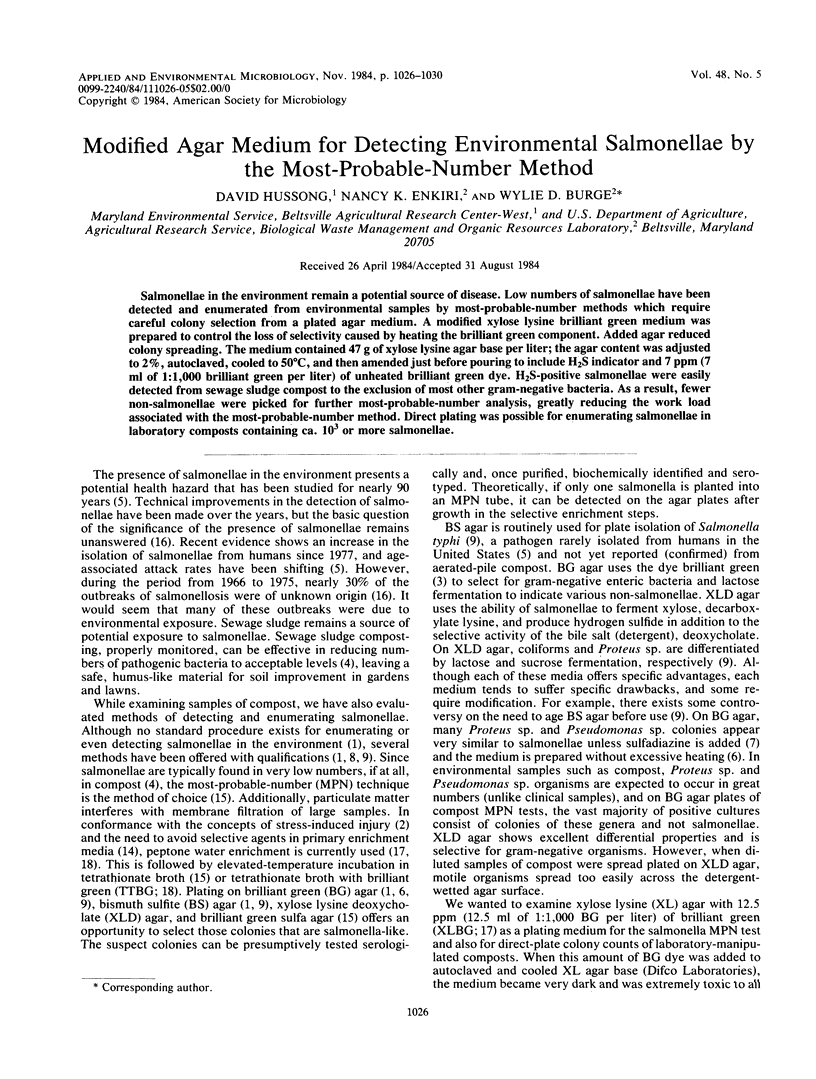
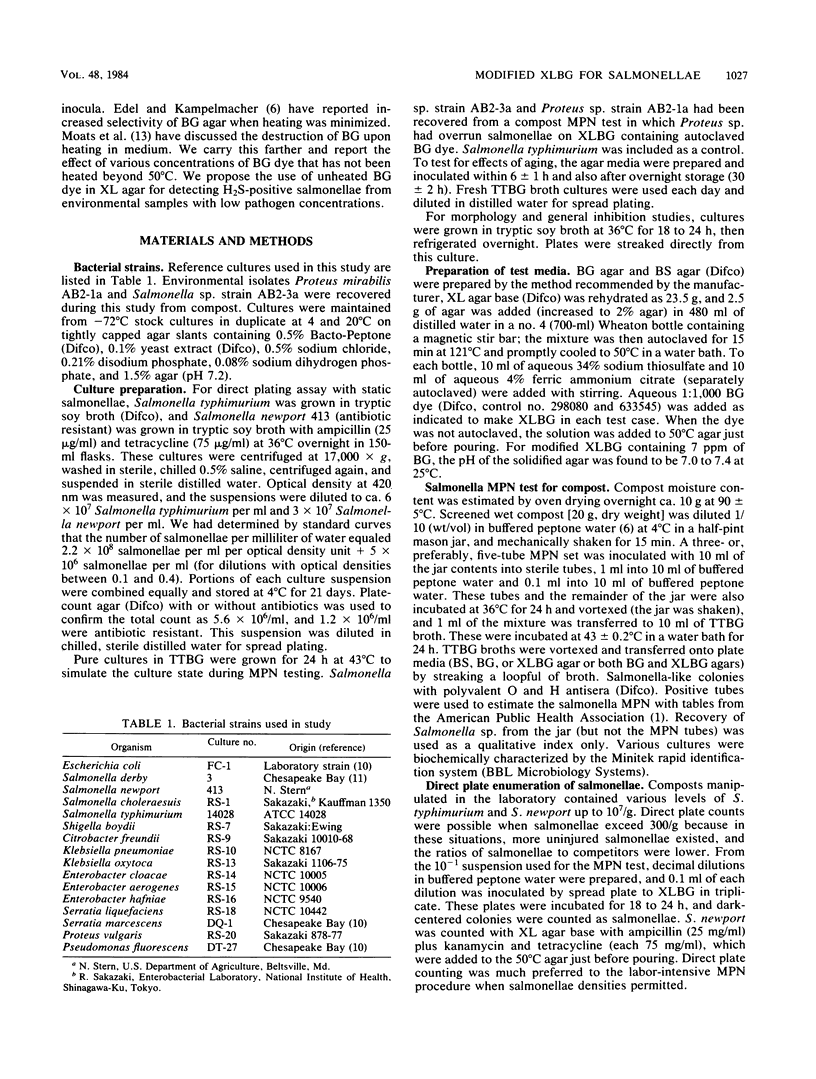
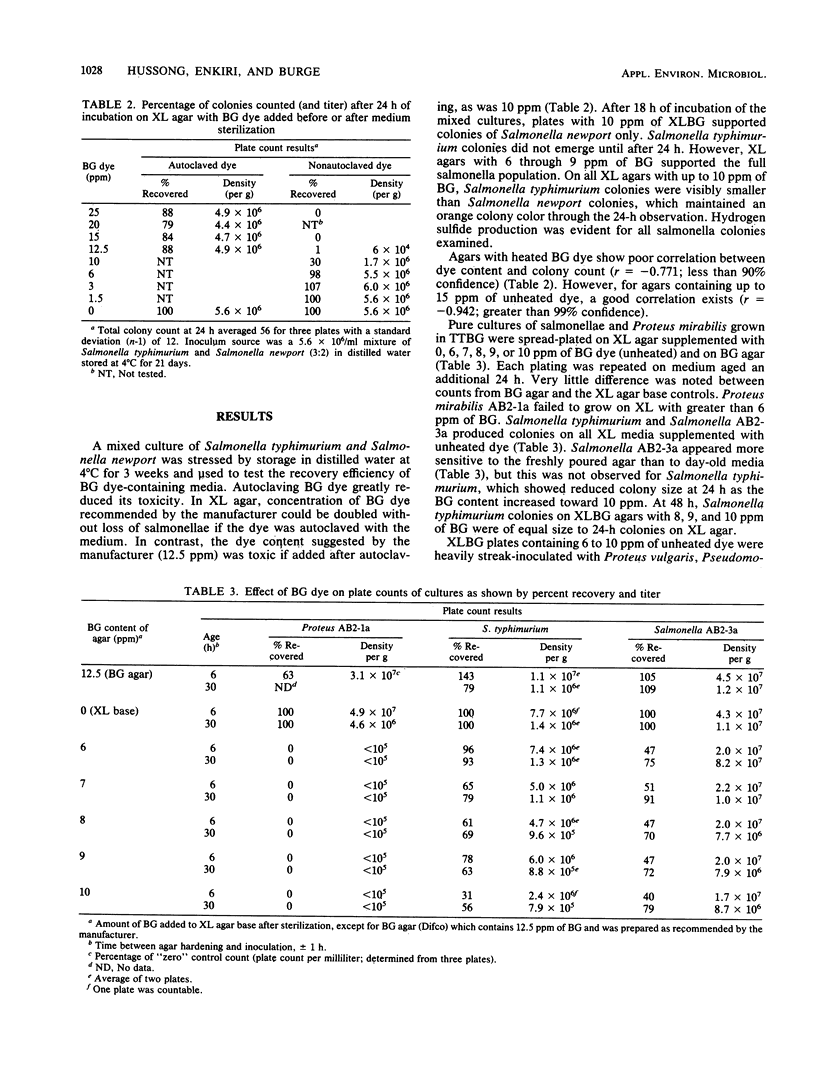
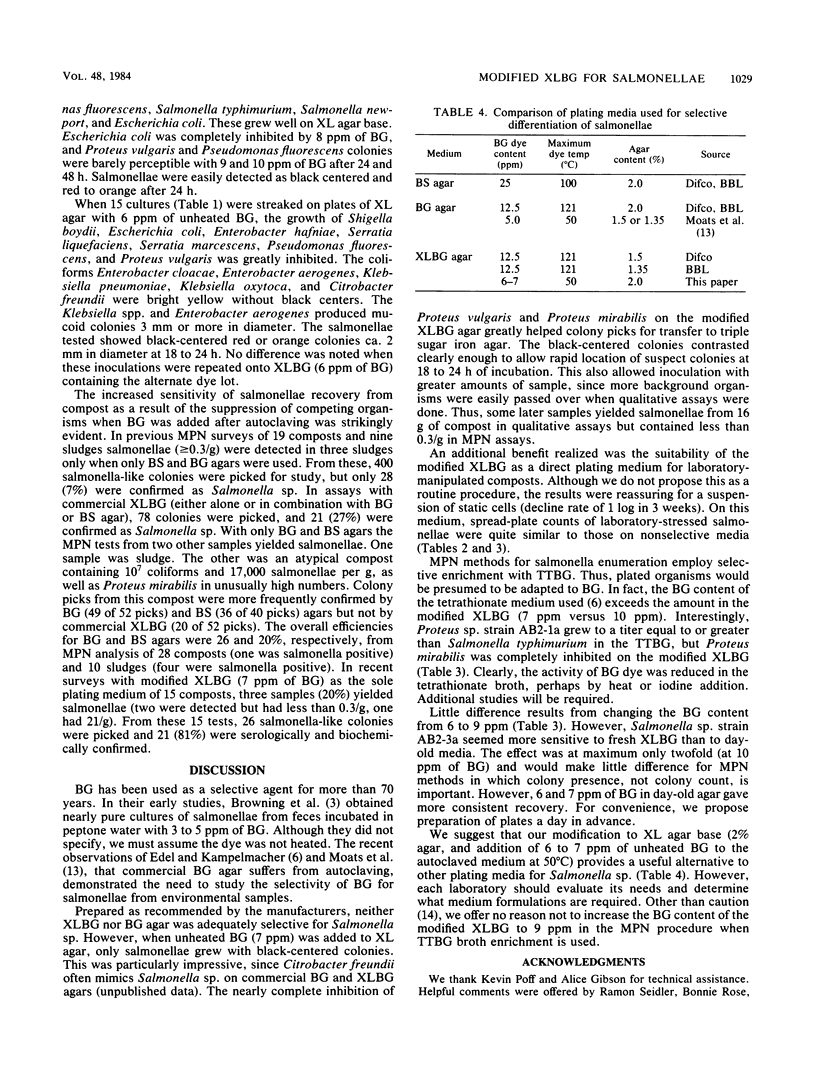
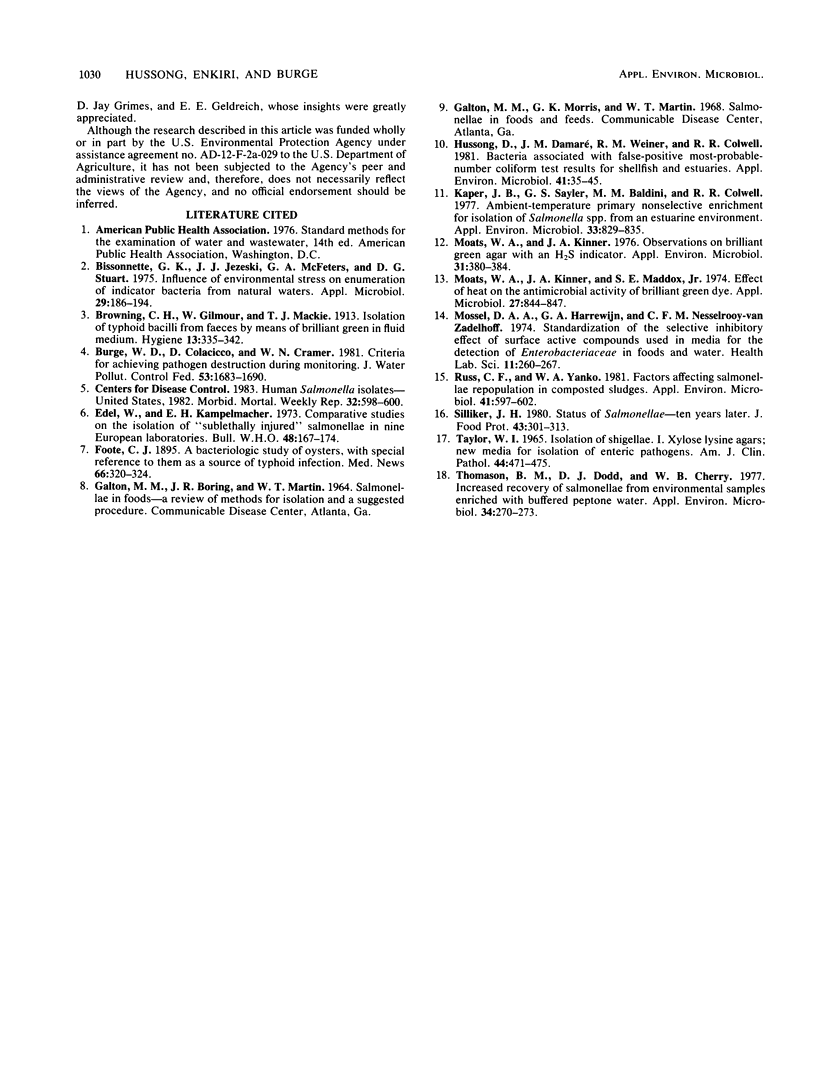
Selected References
These references are in PubMed. This may not be the complete list of references from this article.
- Bissonnette G. K., Jezeski J. J., McFeters G. A., Stuart D. G. Influence of environmental stress on enumeration of indicator bacteria from natural waters. Appl Microbiol. 1975 Feb;29(2):186–194. doi: 10.1128/am.29.2.186-194.1975. [DOI] [PMC free article] [PubMed] [Google Scholar]
- Edel W., Kampelmacher E. H. Comparative studies on the isolation of "sublethally injured" salmonellae in nine European laboratories. Bull World Health Organ. 1973;48(2):167–174. [PMC free article] [PubMed] [Google Scholar]
- Hussong D., Damaré J. M., Weiner R. M., Colwell R. R. Bacteria associated with false-positive most-probable-number coliform test results for shellfish and estuaries. Appl Environ Microbiol. 1981 Jan;41(1):35–45. doi: 10.1128/aem.41.1.35-45.1981. [DOI] [PMC free article] [PubMed] [Google Scholar]
- Kaper J. B., Sayler G. S., Baldini M. M., Colwell R. R. Ambient-temperature primary nonselective enrichment for isolation of Salmonella spp. from an estuarine environment. Appl Environ Microbiol. 1977 Apr;33(4):829–835. doi: 10.1128/aem.33.4.829-835.1977. [DOI] [PMC free article] [PubMed] [Google Scholar]
- Moats W. A., Kinner J. A., Maddox S. E., Jr Effect of heat on the antimicrobial activity of brillant green dye. Appl Microbiol. 1974 May;27(5):844–847. doi: 10.1128/am.27.5.844-847.1974. [DOI] [PMC free article] [PubMed] [Google Scholar]
- Moats W. A., Kinner J. A. Observations on brilliant green agar with H2S indicator. Appl Environ Microbiol. 1976 Mar;31(3):380–384. doi: 10.1128/aem.31.3.380-384.1976. [DOI] [PMC free article] [PubMed] [Google Scholar]
- Mossel D. A., Harrewijn G. A., Nesselrooy-van Zadelhoff C. F. Standardization of the selective inhibitory effect of surface active compounds used in media for the detection of Enterobacteriaceae in foods and water. Health Lab Sci. 1974 Oct;11(4):260–267. [PubMed] [Google Scholar]
- Russ C. F., Yanko W. A. Factors affecting salmonellae repopulation in composted sludges. Appl Environ Microbiol. 1981 Mar;41(3):597–602. doi: 10.1128/aem.41.3.597-602.1981. [DOI] [PMC free article] [PubMed] [Google Scholar]
- Taylor W. I. Isolation of shigellae. I. Xylose lysine agars; new media for isolation of enteric pathogens. Am J Clin Pathol. 1965 Oct;44(4):471–475. [PubMed] [Google Scholar]
- Thomason B. M., Dodd D. J., Cherry W. B. Increased recovery of salmonellae from environmental samples enriched with buffered peptone water. Appl Environ Microbiol. 1977 Sep;34(3):270–273. doi: 10.1128/aem.34.3.270-273.1977. [DOI] [PMC free article] [PubMed] [Google Scholar]


